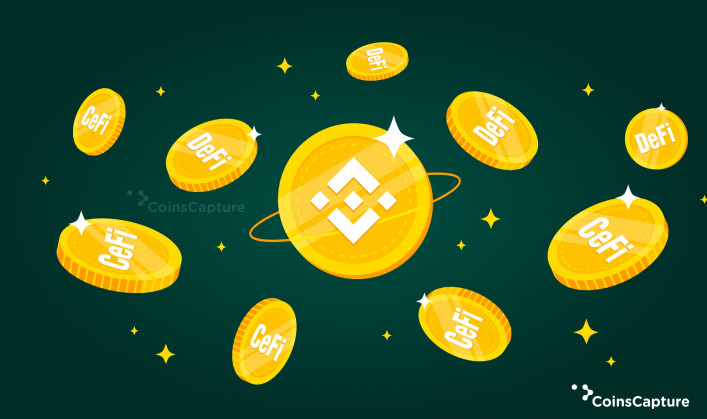7 November 2025
Binance Bridge 2.0 Links CeFi and DeFi
In the early days of the web, users who signed up for Yahoo accounts could only communicate with other Yahoo account holders, while those who signed up for Google's Gmail service could only communicate with other Google account holders. Specialists made great strides in overcoming this restriction by integrating "Interoperability" into its environment. Similarly, blockchain has become ready to offer interoperability standards for consumers to enjoy a unified service. Let us just take a short look at the Binance Bridge 2.0, an interoperable bridge that connects CeFi and DeFi.
Also Read: The Metaverse's 5-Year Impact On Your Enterprise
What is Binance Bridge 2.0?
As a new bridge service, Binance Bridge 2.0 connects the most used blockchains together, allowing for seamless cross-chain trading. To facilitate the transfer of BTokens, which are built on Ether, to the BNB Chain, Binance has released Binance Bridge 2.0. In the BNB Chain ecosystem, you may use your wrapped BTokens to participate in the Metaverse, blockchain-based gameplay, Decentralized Finance, and much more, eliminating the necessity for swaps and removing other interoperability obstacles which have hampered blockchain. Thus, the bridge will serve as a one-stop-shop for CeFi and Decentralized Finance for Binance customers. The original Binance Bridge was developed with the aim of improving the compatibility across different blockchain networks. Also, it made it possible for any Cryptocurrency to be converted into Binance Chain tokens as currently it is known as BNB Chain tokens or Binance Smart Chain or BNB Smart Chain wrapped tokens.
Also Read: What Are Non-Fungible Tokens And Digital Assets?
Seeing this gap, competing blockchain technologies are scrambling to win users over by offering scalable alternatives. Among the best platforms is Binance. In order to take advantage of the same services at much reduced rates, many individuals attempt to transfer their assets, apps, or anything from one network, say Ethereum, to another, say Binance. Binance is the exchange that facilitates this. To facilitate the transfer of assets across networks, Binance provides a bridge service known as Binance Bridge 2.0. Specifically, it offers interoperability among the most popular blockchain platforms. For example, on the Binance Smart Chain, you may exchange your Ethereum-based tokens for BTokens. In the BSC ecosystem, these encased BTokens may be put to use in the Metaverse, blockchain-based gaming, DeFi, and other scenarios.
How Does Binance Bridge 2.0 Work?
Each BToken represents one unit of the underlying securities, and at any time you may exchange your BTokens for the underlying securities itself. Since BTokens will be backed by the original Cryptocurrencies at a 1:1 ratio, they may be converted back into the latter. The financing wallet is the sole place where bridged tokens that are not publicly viewable on the site will be moved. All bridging tokens on the network would be transferred to the financing or spot wallet. Binance claims the most major shift is that you'll no longer need a separate wallet to do these actions; instead, you may do so directly from your Binance account. If you have both listed and unlisted tokens, the former will go to your funding or spot wallet, while the latter will be held in a self-custody wallet (SCW) inside the Binance application. Customers may keep their virtual currencies, including bitcoins, in a self-custody wallet. SCWs, also referred to as non-custodial wallets, are required for use with blockchain-based financial applications such as the Compound Liquidity Pool. The platform claims that the cross-chain bridge would increase cross-blockchain interoperability and provide consumers instant access to the Defi on the BNB Chain. This improvement is anticipated to increase desire for the Binance system, which will ultimately be represented in a greater value.
How Does Binance Bridge 2.0 Link CeFi and DeFi?
Decentralized Finance is lauded for its ability to do away with middlemen, whereas CeFi is praised for its smooth operation. Bringing DeFi and CeFi to a global population is now possible with Binance Bridge 2.0. Since its name implies, Binance Bridge 1.0 only served to connect Binance's exchange with other networks so that users may trade between them using the platform's resources. Binance Bridge 2.0 allows customers to convert ERC-20 tokens into BEP-20 tokens, creating a bridge between CeFi and DeFi. Perhaps most interestingly, those tokens may be invested on Decentralized Finance protocols running on the BSC blockchain. With this, connecting CeFi and DeFi on Binance Bridge 2.0 is a breeze.
The Need for Interoperability
Going back to the beginning, things would've been challenging for us right now if we didn't have an interoperable feature with the email systems. In the same vein, blockchain technologies cannot reach their full capabilities without the cross-chain functionality. By facilitating the exchange of resources and data across a wide variety of blockchains, this technology also enables users to instantaneously switch to and make use of their preferred network. As a solution to the prevalent issues in the field, cross-chain capability facilitates instantaneous as well as easy user-to-user communication and information sharing.
Disclaimer: The author’s thoughts and comments are solely for educational reasons and informative purposes only. They do not represent financial, investment, or other advice.






